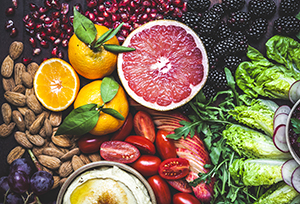 The alternative protein industry is evolving rapidly, driven by consumer demand for sustainability, health benefits, and improved taste and texture. Below is a breakdown of key trends shaping the plant-based and alternative protein sector in 2025.
The alternative protein industry is evolving rapidly, driven by consumer demand for sustainability, health benefits, and improved taste and texture. Below is a breakdown of key trends shaping the plant-based and alternative protein sector in 2025.
Expansion of Alternative Proteins
New Protein Sources: Pea, chickpea, lentil, and fava bean proteins continue to grow in popularity, while novel sources such as mycoprotein (fungi-based), insect protein, and seaweed-based proteins are gaining traction.
Cultivated Meat & Hybrid Proteins: Lab-grown meat and hybrid products combining plant-based and cultivated meat are becoming more mainstream, thanks to advancements in precision fermentation.
Formulation Tips:
Pea & Chickpea Protein: Blend with starches (e.g., tapioca, rice flour) to improve texture in meat alternatives.
Lentil & Fava Bean Protein: Pair with enzymatic hydrolysis to reduce bitterness and improve digestibility.
Mycoprotein: Requires specific fermentation conditions for optimal growth and taste; commonly paired with flavor masking agents.
Seaweed Proteins: High in umami, but can have fishy or metallic notes; use citrus extracts or rosemary extract to neutralize unwanted flavors.
Discover ULTRUS, software to help organizations succeed through safe and sustainable performance. Learn more here!
Whole-Food & Minimally Processed Plant-Based Diets
Consumers are shifting toward whole-food, plant-based diets, preferring unprocessed ingredients such as beans, legumes, nuts, seeds, and whole grains. This trend aligns with the demand for clearer product labeling and transparency in food sourcing.
Formulation Tips:
Binding agents like chia, flax, and psyllium husk can replace chemical emulsifiers.
Nutrient fortification with vitamin B12, iron, and omega-3 enhances nutritional value.
Fermentation techniques improve digestibility and natural umami flavors in whole-food formulations.
Functional & Health-Oriented Plant-Based Foods
Mushroom-Based Proteins: Functional mushrooms, such as lion’s mane and reishi, are being incorporated into protein products due to their health benefits.
Recombinant Protein Technology: Companies like New Culture and Every Co. are using recombinant casein and egg proteins to create realistic dairy and egg substitutes that mimic traditional textures and flavors.
Formulation Tips:
Mushroom extracts blend well with pea and soy proteins for improved bioavailability.
Use natural adaptogen stabilizers (e.g., ginger, ashwagandha) to maintain potency in functional formulations.
Freeze-dried mushroom powders enhance shelf life and concentrated flavors.
Improved Taste & Texture Innovations
Texturization Improvements: Companies like Ingredion are using starch to improve the fibrous structure and mouthfeel of plant-based meat alternatives.
Directional Freezing for Meat-Like Texture: New School Foods is
developing a directional freezing technique to replicate the muscle fiber structure of real meat in plant-based analogs.
Formulation Tips:
Crosslinked starches (e.g., resistant starches) provide elasticity similar to animal proteins.
High-moisture extrusion enhances fibrous meat-like structure in plant-based products.
Blending different plant proteins (e.g., pea + soy) creates a more balanced amino acid profile and better texture.
Alternative Dairy & Seafood Innovations
Next-Generation Dairy Alternatives: Oat, pea, and sesame milk are gaining market share, while cashew- and coconut-based cheeses enhanced by fermentation are improving in taste and textures.
Formulation Tips:
Enzyme-treated oat & pea proteins reduce bitterness and improve creaminess.
Lipid structuring using coconut & sunflower oil blends mimics real dairy fat.
Natural fermentation (e.g., lactic acid bacteria) enhances texture and tangy flavors in cheese alternatives.
Plant-Based Seafood: Companies are developing seafood alternatives made from algae, soy, and fungi to address overfishing concerns.
Formulation Tips:
Umami enhancement using yeast extracts & seaweed concentrates.
Hydrocolloid-based gelling agents (e.g., agar, kappa carrageenan) create realistic textures.
Omega-3 fortification using microalgae-derived DHA mimics fish-based nutrition.
Investment & Market Growth
Investor confidence in the alternative protein sector is strong, with significant funding going into plant-based startups, cultivated meat production, and precision fermentation technologies.
Future Formulation Trends:
AI-powered ingredient optimization to develop better plant protein textures.
Enhanced bioprocessing for recombinant proteins.
Hybrid protein blends (plant + microbial proteins) for improved functionality.
The plant-based and alternative protein industry in 2025 is set to focus on enhancing nutritional value, improving product textures, and expanding sustainable protein sources. Companies that prioritize health-conscious, minimally processed, and eco-friendly innovations will be well-positioned for success in this evolving market.
Sources:
totalfood.com
greyb.com
vegconomist.com
The views, opinions and technical analyses presented here are those of the author or advertiser, and are not necessarily those of ULProspector.com or UL Solutions. The appearance of this content in the UL Prospector Knowledge Center does not constitute an endorsement by UL Solutions or its affiliates.
All content is subject to copyright and may not be reproduced without prior authorization from UL Solutions or the content author.
The content has been made available for informational and educational purposes only. While the editors of this site may verify the accuracy of its content from time to time, we assume no responsibility for errors made by the author, editorial staff or any other contributor.
UL Solutions does not make any representations or warranties with respect to the accuracy, applicability, fitness or completeness of the content. UL Solutions does not warrant the performance, effectiveness or applicability of sites listed or linked to in any content.
